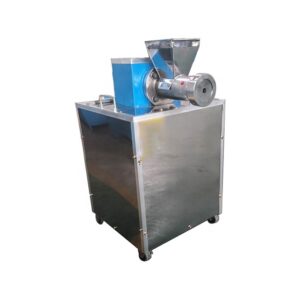 Pasta has been a staple of Italian cuisine for centuries, and the process of making pasta has evolved significantly over time. One of the most significant advancements in pasta making was the invention of the pasta maker.
Pasta has been a staple of Italian cuisine for centuries, and the process of making pasta has evolved significantly over time. One of the most significant advancements in pasta making was the invention of the pasta maker.
Early History of Pasta Making
Pasta has been a part of Italian cuisine since the 13th century, and the process of making pasta was originally done entirely by hand. At this time, pasta was made using a mixture of flour and water that was kneaded by hand and then rolled out with a rolling pin. The dough was then cut into various shapes, such as spaghetti or lasagna, using a knife. In the 18th century, pasta makers began to appear in Italy. These early pasta makers were made of wood and had two rollers that were used to flatten the pasta dough. While these early pasta makers made the process of making pasta faster and more efficient, they were still largely operated by hand and required a significant amount of physical labor.
The Invention of the Pasta Machine
In the late 19th century, a new type of pasta maker was invented that would revolutionize the way pasta was made. This new pasta maker was a machine that used a series of rollers to flatten and cut the pasta dough into various shapes. The pasta machine was powered by a hand crank that allowed the pasta to be made quickly and efficiently with minimal physical labor. The first pasta machine was invented by an Italian named Pellegrino Artusi in 1875. Artusi’s pasta machine was made of iron and consisted of two rollers that were used to flatten the pasta dough. The pasta was then fed through a cutter that sliced it into various shapes, such as spaghetti or fettuccine. In the early 20th century, pasta machines began to be manufactured on a larger scale. Companies such as Imperia and Marcato began producing pasta machines for home use. Making it easier for people to make their own pasta at home.
Advancements in Pasta Maker Technology
In the mid-20th century, new advancements in pasta maker technology further improved the pasta making process. Electric pasta makers were introduced, allowing the pasta to be made with even less physical labor. These electric pasta makers also featured multiple attachments. Allowing users to make a variety of pasta shapes and sizes. In the 21st century, pasta makers have continued to evolve. Many modern pasta makers are now made of stainless steel, making them more durable and easier to clean. Some pasta makers even feature digital controls that allow users to adjust the thickness of the pasta dough and the size of the pasta shapes.
The Benefits of Using a Pasta Maker
Using a pasta maker has numerous benefits for home cooks. A pasta maker ensures that the pasta is uniform in shape and thickness, providing a consistent texture and taste. Making fresh pasta at home allows you to control the ingredients, ensuring a healthier option than store-bought pasta, which often contains preservatives and additives. With a pasta maker, you can create a variety of pasta shapes. Including spaghetti, fettuccine, and even ravioli, allowing you to customize your pasta dishes to your liking.
The invention of the pasta machine has revolutionized the way we make pasta. What was once a time-consuming and physically demanding process can now be done quickly and efficiently with minimal physical labor. From the early wooden pasta makers to the modern electric pasta makers of today, pasta makers have come a long way. Using a pasta maker allows home cooks to create delicious homemade pasta with ease, providing a range of benefits that make the process easier and more enjoyable.